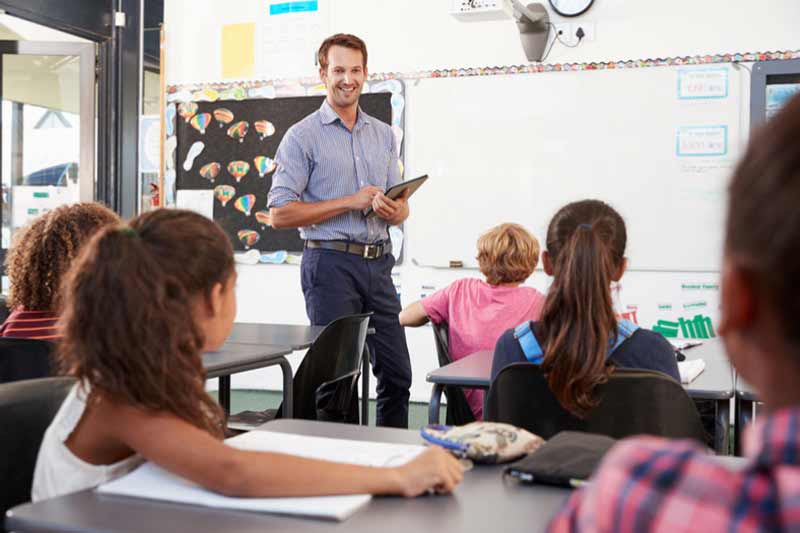Why schools are going digital to reduce their environmental impact
The New Year can be hectic for educational facilities, with students and teachers both feeling refreshed and ready to get back to work after the Christmas holidays! With a new term upon you once again, now is also an ideal time to start planning for the year ahead - starting with thinking about the amount of waste your facility produces. One of the ways that schools, colleges and universities are already addressing this, is by going digital to reduce their impact on the environment.

As statistics show, educational facilities such as schools, colleges and universities are massive creators of waste; particularly when it comes to food and paper. WRAP (Waste & Resources Action Programme) estimates that the UK’s education sector produces 210,700 tonnes of waste each year, which includes 123,000 tonnes of food waste. As Education Executive reports, around one million sheets of paper are also being used per school, per year, and a total of £60,000 is being spent on photocopying. According to a recent study, education is the sector that’s having the most trouble reducing its paper use. In fact, 80% of staff working within the sector admit to this.
There are a number of reasons why schools and other educational facilities produce a large volume of waste. Printed documents are one of the main culprits of increased paper usage and this includes using paper registration sheets. Educational facilities also have vast deliveries of stationary and other supplies (which produces a lot of cardboard and plastic waste). Additionally, as WRAP’s statistics show, - canteens in educational facilities are a major contributor to the volume of food waste being produced each year in the UK.
Food packaging causes problems for the environment with a substantial amount of metal, paper, plastic and cardboard waste still ending up in landfill sites, and the world’s seas and oceans. Sadly, this is despite the fact that they should (and could quite easily) be recycled.
Although canteen waste isn’t something that can be helped by adopting digital systems and processes, doing so is an ideal jumping off point for schools, colleges and universities, that want to minimise their costs and environmental impact by tackling the amount of paper they use. With that in mind, how are educational facilities going digital?
How schools are reducing their waste with digital
One standard step that schools and other educational facilities are taking to reduce their paper usage is by swapping standard dry erase whiteboards with interactive whiteboards. They are also using online registers and attendance tracking software instead of paper registers and providing pupils with digital tablets instead of paper workbooks to make notes and produce work on. Tablets are more cost effective for schools than laptops or desktop computers and they’re also more compact, making them easier to move around the class.
Schools, colleges and universities are now utilising more digital processes because they increase efficiency and reduce user error. They also minimise the volume of waste being produced in the form of plastic wrapping, cardboard, paper workbooks, paper towels and pens, and other plastic stationary.
You should be adopting as many of these methods as possible to reduce your carbon footprint, as well as storing documents online in a Cloud based system to reduce printing. Storing your documents in a Cloud based system allows them to be accessed from any connected device from any location, eliminating the need to print documents on paper.
As Rombourne explains, every time you print something, the need for paper increases and more trees are cut down to provide this. Trees are vital for maintaining the health of humans and our environment because they remove harmful CO2 emissions from the air we breathe.
For colleges and universities, you should also be encouraging students to download e-books wherever possible, as well as giving them the means to submit assignments electronically. This could be through email, Dropbox or an open-source learning platform, such as Moodle. Additionally, the anti-plagiarism software, Turnitin, also enables students to submit work online.
Other steps your school, college or university can take to help the environment is by encouraging your staff and pupils to recycle by providing easy access to recycling bins (that are clearly labelled with the suitable materials for each bin) and installing lights that automatically switch off when a room isn’t in use. Investing in a waste baler will also make it easier to recycle your waste by segregating the different materials, while a waste compactor will the volume of waste you send to landfill by compacting it.
To find out how a waste baler or compactor could help your school meet its recycling targets, get in touch with the phs Wastekit team or request a free Wastesaving Audit.